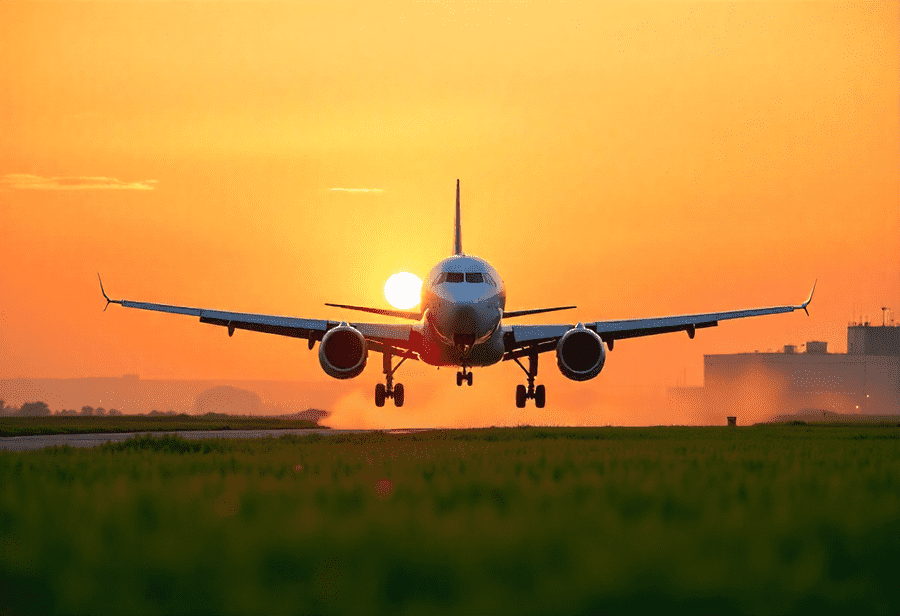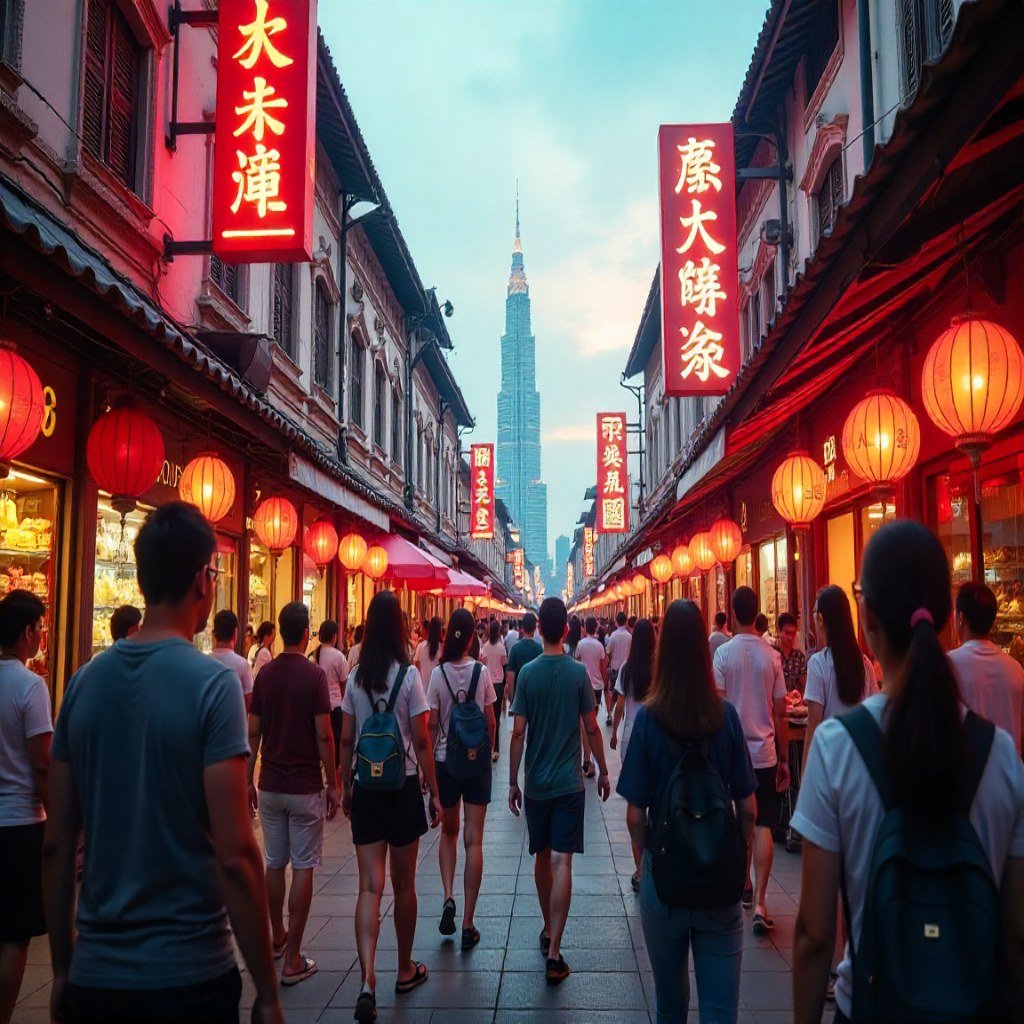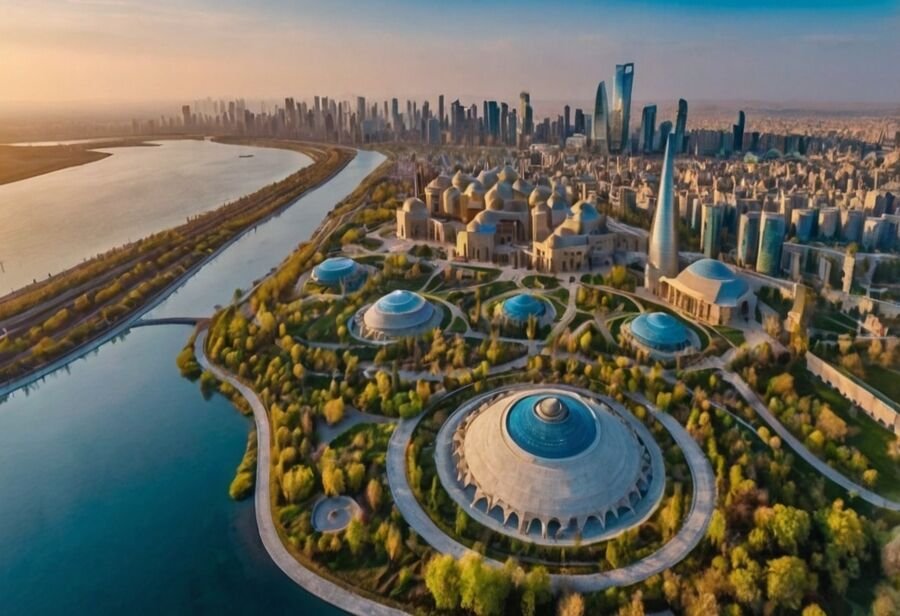Asia Travel Pulse
Thailand Now Has Increased Connectivity With IndiGo’s New Daily Flights From Mumbai

Saturday, August 2, 2025
Thailand now has increased connectivity with IndiGo’s new daily flights from Mumbai, offering travelers more options and flexibility for their trips. This expansion aims to cater to growing demand between India and Thailand, providing seamless connections to key destinations like Bangkok and Phuket. By strategically adding these flights, IndiGo is making travel more accessible and convenient, allowing passengers to connect smoothly to long-haul services and enhancing the overall travel experience.
IndiGo has rolled out an exciting new promotion aimed at travelers planning trips to Thailand, offering a discount of up to 10% on fares when using the promo code 6ETHAI. This offer arrives at an opportune moment when key Thai destinations, such as Bangkok, Phuket, and Chiang Mai, continue to operate smoothly with flights running as expected. For those eager to explore the vibrant culture, stunning beaches, and rich history of Thailand, this limited-time discount makes traveling even more affordable.
The timing of this promotion aligns with Thailand’s low season, which typically spans from July to September, coinciding with the monsoon. Although the wet season can be unpredictable, it presents an ideal opportunity for travelers seeking more affordable accommodations and fewer crowds at popular tourist sites. During this period, hotel prices drop, and reservations at renowned restaurants can be made without hassle. With fewer tourists around, visitors can enjoy popular attractions without long lines or congested spaces. For those who enjoy a quieter experience, traveling during the low season can be incredibly rewarding.
However, travelers should remain mindful of the weather conditions during Thailand’s monsoon period. While rain is common, it can be unpredictable, with sudden bursts of heavy rainfall or long stretches of days where showers may disrupt travel plans. In certain regions, such as the islands, boat services can experience delays or cancellations due to adverse weather. For those hoping to explore the country’s many islands, it is important to monitor local forecasts and adjust travel plans accordingly.
IndiGo Expands Reach with Increased Flight Offerings
In addition to the discounted fares, IndiGo has been expanding its presence in Southeast Asia, particularly in Thailand. The airline recently introduced a second daily flight between Mumbai and both Bangkok and Phuket, starting from July 2025. This move is part of IndiGo’s strategy to enhance its connectivity to Southeast Asia and offer more options for passengers traveling to Thailand. The added flights allow travelers greater flexibility in planning their trips, providing more choices for those flying from Mumbai.
These flights are carefully scheduled to ensure easy connections with the airline’s long-haul routes to Europe. This makes it convenient for passengers traveling to Thailand to seamlessly transfer to flights bound for various European destinations through IndiGo’s expanding Mumbai hub. The addition of these flights will provide a much-needed boost to tourism and business travel between India and Thailand, offering travelers smooth and quick connections.
The move to increase flight frequency between Mumbai and Thailand is just one element of IndiGo’s larger international growth strategy. The airline is positioning itself as a key player in the global aviation market by expanding its reach beyond South Asia. As part of this effort, IndiGo has entered into a fleet expansion program that involves the lease of Boeing 787-9 Dreamliners from Norse Atlantic Airways, beginning in early 2025. These modern aircraft are expected to enhance the airline’s capacity on high-demand routes such as Delhi to Bangkok, which saw its operations launched in March 2025.
This strategic fleet expansion is set to accommodate the growing demand for flights to and from Southeast Asia, particularly as travelers look for affordable and reliable options to connect with key destinations like Thailand. IndiGo’s commitment to increasing its international flight offerings demonstrates its ambition to offer passengers greater choice and flexibility in their travel plans.
Security Advisory for Travel to Border Provinces
While the expansion of IndiGo’s services to Thailand is promising, it is important for travelers to remain informed of any safety concerns. Recently, a security advisory was issued for Indian nationals traveling to certain regions in Thailand. The advisory specifically recommends avoiding non-essential travel to the border provinces of Chanthaburi and Sa Kaeo. These areas have experienced some security concerns, and travelers are encouraged to stay updated on the situation.
In response to the ongoing security situation, emergency contact numbers have been provided to Indian nationals who are already in the region. This measure ensures that travelers can seek assistance if needed. Although most parts of Thailand remain safe for tourists, it is essential to stay informed of any local issues that may affect travel plans. As always, travelers should exercise caution and follow official guidance when visiting areas with potential risks.
A Thriving Travel Destination
Despite the potential challenges posed by the monsoon season and security concerns in certain regions, Thailand remains a popular and vibrant travel destination. The country offers a diverse range of experiences, from bustling cities to tranquil islands, rich cultural heritage to modern attractions. Whether exploring the ornate temples in Chiang Mai, lounging on the white sandy beaches of Phuket, or experiencing the vibrant street life of Bangkok, there’s something for every type of traveler.
IndiGo’s new promotion, combined with its expanding flight offerings, makes it easier for travelers to visit Thailand at a more affordable price, while also providing more options for smoother connections to other international destinations. With its growing international network and commitment to offering value-driven services, IndiGo continues to make travel more accessible for its passengers, helping them discover the beauty and charm of Thailand.
Thailand now benefits from increased connectivity with IndiGo’s new daily flights from Mumbai, providing more travel options and seamless connections to key destinations in Southeast Asia. This expansion meets growing demand and enhances travel flexibility for passengers.
In conclusion, whether travelers are looking for an off-peak getaway or planning a longer vacation to explore Thailand’s diverse attractions, IndiGo’s promotion, paired with its growing network of flights to Thailand, offers a great opportunity to visit the Land of Smiles at a discounted price.
Asia Travel Pulse
Thailand Joins Vietnam, Malaysia and Singapore in Experiencing a Massive Surge in Chinese Tourists Arrivals, Everything You Need to Know Now

Sunday, August 3, 2025
Southeast Asia has become a prime destination for Chinese tourists, as the region witnesses a remarkable surge in Chinese tourists. The growth in Chinese tourism is reshaping the tourism landscape, with countries like Thailand, Vietnam, Malaysia and Singapore benefiting from this influx. Government-verified sources confirm these trends, highlighting a series of developments that are driving this growth. Here’s a detailed report on the surge in Chinese tourists in these countries and what it means for the region’s economic and cultural landscape.
Thailand – Leading the Surge in Chinese Tourists
Thailand has long been a favorite destination for Chinese tourists. In 2024, the country welcomed 6.7 million Chinese tourists, marking a 91.7% increase from the previous year. This surge was driven by the introduction of a visa-free policy for Chinese nationals, which significantly boosted travel from China.
By July 2025, Thailand had already recorded 2.64 million Chinese visitors, with China becoming the top source market for tourism. Although the country faced a 24% year-on-year drop in Chinese arrivals during the first quarter of 2025, the overall trend remains positive. The Thai government has focused heavily on tourism campaigns and the introduction of favorable visa policies has helped solidify Thailand’s position as the leading destination for Chinese tourists in Southeast Asia.
Vietnam – A Growing Competitor of the Surge in Chinese Tourists
Vietnam has emerged as a strong contender in the Southeast Asian tourism market. In 2024, the country welcomed 3.7 million Chinese tourists, reflecting a significant rise from previous years. In the first quarter of 2025, Vietnam surpassed Thailand with 1.6 million Chinese visitors, compared to Thailand’s 1.3 million. This surge has been attributed to the growing connectivity between Vietnam and China, alongside aggressive promotional campaigns aimed at Chinese tourists.
Malaysia – A Hub for Chinese Tourists
Malaysia has also seen a notable rise in Chinese tourist arrivals. In 2024, 3.29 million Chinese visitors flocked to the country, contributing to a total of over 25 million international arrivals. Malaysia’s tourism sector continues to thrive, with the country aiming to attract 31.3 million international visitors in 2025, a significant portion of which is expected to come from China.
One of the key factors driving the growth in Chinese arrivals is Malaysia’s introduction of visa-free entry for Chinese travelers in December 2023. This policy has made it easier for Chinese tourists to explore the country’s diverse cultural and natural attractions. The government’s focus on boosting Malaysia’s tourism industry, along with the country’s rich offerings in shopping, history and natural beauty, makes it a top destination for Chinese visitors.
Singapore – Attracting Record Numbers of Chinese Tourists
Singapore has seen a surge in Chinese tourism, with 2.89 million visitors from China in 2024, a 134.1% increase year-on-year. In 2025, the growth continued, with the city-state recording 1.37 million Chinese visitors in May alone. This increase is driven by Singapore’s modern infrastructure, luxury shopping opportunities and vibrant cultural experiences.
The Singapore Tourism Board (STB) has focused on drawing Chinese tourists through a combination of promotional campaigns and strategic partnerships. With its strong ties to China, the country remains a popular choice for Chinese travelers, particularly during peak travel periods.
Conclusion – The Economic Impact of the Surge in Chinese Tourists
The surge in Chinese tourist arrivals across Southeast Asia is having a significant impact on the region’s economy. The tourism sector, which plays a vital role in the GDP of these countries, is benefiting from the growing number of Chinese visitors. These travelers are contributing to job creation in hospitality, retail, and transportation, making tourism a critical driver of economic growth.
As the region continues to experience a surge in Chinese arrivals, the need for enhanced infrastructure, improved connectivity and strategic marketing efforts will be crucial to sustaining this growth. Governments in Thailand, Vietnam, Malaysia and Singapore are clearly aware of the importance of Chinese tourism and their policies reflect a commitment to making Southeast Asia an even more attractive destination for travelers from China.
Asia Travel Pulse
Azerbaijan Unlocks Central Asia Tourism Potential, Attracting Record Numbers from Kazakhstan and Uzbekistan with Strategic Initiatives and Seamless Connectivity : New Update You Need to Know

Sunday, August 3, 2025
Azerbaijan is successfully unlocking the tourism potential of Central Asia, particularly attracting record numbers of visitors from Kazakhstan and Uzbekistan. This surge in tourism can be attributed to a series of strategic initiatives, including visa-free travel for citizens of both countries and the expansion of direct flight routes to Baku. These efforts have made Azerbaijan more accessible and appealing to Central Asian travelers. Additionally, Azerbaijan’s rich cultural heritage, stunning landscapes, and vibrant cities, combined with targeted promotional campaigns and events like Dream Fest, are drawing increasing attention from the region, solidifying its position as a top travel destination.
Azerbaijan is making significant efforts to boost its tourism sector by targeting visitors from Central Asia, with a particular emphasis on attracting travelers from Kazakhstan and Uzbekistan. With growing interest in Azerbaijan’s rich cultural heritage, beautiful landscapes, and vibrant cities, the country is making efforts to tap into the potential of these neighboring regions.
To promote these efforts, the Azerbaijan Tourism Board recently organized a familiarization trip for tourism representatives from Kazakhstan and Uzbekistan. The objective was to showcase the wide array of tourism experiences available throughout Azerbaijan.The tour included visits to Baku, the nation’s lively capital, as well as scenic spots such as Shamakhi and Basqal, known for their picturesque landscapes and historic significance. The participants also explored the Caspian Sea coastline, visiting popular beach resorts and hotels that offer a relaxing getaway.
A standout event during the trip was the Dream Fest, a renowned annual music festival hosted at the Sea Breeze Resort. This event has become a favorite among regional travelers, offering a blend of entertainment, cultural performances, and an idyllic beachside setting. Dream Fest has grown in popularity, attracting a large crowd and contributing to the country’s status as a key cultural destination for tourists seeking both relaxation and unique experiences.
The familiarization tour also included a business-to-business networking session, where nearly 60 Azerbaijani destination management companies and hotels participated. This session was designed to strengthen tourism partnerships between Azerbaijan and Central Asia, laying the foundation for long-term collaboration and tourism development. These meetings provided a valuable opportunity for stakeholders to discuss future projects and initiatives aimed at expanding tourism between the regions.
Azerbaijan has begun to witness encouraging outcomes from its initiatives aimed at drawing more tourists from Central Asia. According to the Azerbaijan Tourism Board, over 68,000 visitors from Kazakhstan and Uzbekistan traveled to Azerbaijan during the first half of this year, reflecting a 15 percent growth compared to the same period in the previous year. This growth can be attributed to the country’s visa-free travel policy for citizens of both Kazakhstan and Uzbekistan, making it easier for tourists to visit. Additionally, the expansion of direct flights from multiple cities in both countries to Baku has played a significant role in simplifying travel and increasing accessibility.
At present, travelers have the convenience of flying directly to Baku from four cities in Kazakhstan and two cities in Uzbekistan. With airlines like AZAL, FlyArystan, Air Astana, Uzbekistan Airways, and Centrum Air operating regular flights, the journey takes approximately three hours, offering a fast and convenient option for Central Asian visitors. This ease of access has contributed to a surge in both leisure and business tourism, providing a boost to Azerbaijan’s growing tourism sector.
The rise in tourism is also closely tied to the strengthening economic and cultural connections between Azerbaijan and Central Asia. Azerbaijan has focused on strengthening these relationships, seeing tourism as an important avenue for enhancing diplomatic and economic collaboration. In addition to improved air connectivity, there are also plans to introduce a high-speed passenger ferry service between Aktau (Kazakhstan) and Baku, further enhancing tourism connectivity across the Caspian Sea. This proposal reflects Azerbaijan’s commitment to fostering seamless travel options and improving regional tourism integration.
Azerbaijan’s commitment to developing its tourism sector is evident in the country’s long-term strategic planning. In 2018, the nation launched the “Take Another Look!” campaign, accompanied by a new tourism logo aimed at rebranding Azerbaijan as a premier global destination. In that same year, the State Tourism Agency established six international offices in strategically important markets, such as Russia, the UAE, Saudi Arabia, India, China, and Germany. These efforts were designed to raise global awareness of Azerbaijan’s unique offerings, ranging from its cultural landmarks to its diverse landscapes.
The success of these initiatives was evident in 2019 when Azerbaijan welcomed a record 3.2 million international visitors, a significant increase from previous years. However, the COVID-19 pandemic severely impacted global tourism, with the number of international visitors dropping to just 795,000 in 2020 due to border closures and travel restrictions. Despite these challenges, Azerbaijan’s tourism sector is on the path to recovery, with a growing number of travelers returning to explore the country’s offerings.
Azerbaijan is unlocking Central Asia’s tourism potential by attracting record numbers of visitors from Kazakhstan and Uzbekistan through strategic initiatives, including visa-free travel and expanded direct flights, alongside its rich cultural offerings and targeted promotional campaigns.
In conclusion, Azerbaijan’s tourism sector is demonstrating resilience as it adapts to a post-pandemic world. Through strategic investments in infrastructure, strengthened relationships with neighboring regions, and the promotion of unique travel experiences, the country is positioning itself as a leading destination in Central Asia. With its rich cultural heritage, natural beauty, and hospitality, Azerbaijan is set to continue attracting increasing numbers of visitors, establishing itself as a key player in the region’s tourism market.
Asia Travel Pulse
Malaysia, Thailand, China and India Shape the New Face of Asian Tourism as Visa-Free Travel and Safety Concerns Shift Traveler Flows Across the Region

Sunday, August 3, 2025
The landscape of Asian tourism is undergoing a dramatic transformation in 2025, with Malaysia, Thailand, China, and India emerging as key players in a shifting regional travel narrative. Malaysia has surged ahead as a top destination by offering visa-free access to millions and investing heavily in airport infrastructure and traveler safety, attracting record numbers of international arrivals. Meanwhile, Thailand—long considered the region’s tourism leader—has seen a dip in confidence due to natural disasters, security incidents, and escalating border tensions that have led to widespread booking cancellations. On the other side of the equation, outbound travelers from China and India are driving this change, with Chinese tourists pivoting toward safer and more accessible destinations like Malaysia, and Indian travelers taking advantage of relaxed visa rules to explore the region more freely. Together, these four countries are reshaping how, where, and why people travel across Asia in 2025.
Visa-Free Travel Opens the Door for Growth
A major catalyst behind Malaysia’s rise is its proactive visa exemption policy, which has eliminated bureaucratic barriers for millions of travelers. Visitors from key tourism markets have benefited from smoother and faster entry procedures, helping drive traffic during peak and off-peak periods alike.
Malaysia recently extended its visa-free access for citizens of China, offering a five-year exemption with a future option to extend it through the next decade. This move has streamlined the travel process and positioned Malaysia as an attractive destination for tour operators, families, and repeat visitors. Likewise, tourists from India can enter Malaysia without a visa through 2026, further widening the country’s appeal across the Asian continent.
These relaxed travel policies have been instrumental in converting interest into bookings, especially from travelers seeking convenient, no-hassle getaways.
Airport Infrastructure Scaled for Surge
To meet the growing influx of visitors, Malaysia has expanded and upgraded key infrastructure—particularly at its primary international gateway. Terminal 1 at Kuala Lumpur International Airport has undergone a major improvement valued at RM30 million (US\$7 million). This renovation focused on optimizing passenger flow, expanding facilities, and accommodating rising international traffic.
With enhanced terminal operations, better baggage handling, and streamlined immigration counters, the airport now serves as a more efficient entry point for the millions of tourists choosing Malaysia this year. The improvements have also improved Malaysia’s image as a modern and capable host for long-haul and regional travelers.
Travel Confidence Boosted Through Security Reinforcement
Beyond accessibility, Malaysia’s strategic focus on border security and travel safety has played a key role in maintaining traveler confidence. The government has tightened screening measures and refused entry to large numbers of passengers from flights identified as high-risk. This preventive approach, coupled with increased airport surveillance and a visible security presence, has reduced risks and reassured international arrivals.
The emphasis on maintaining a safe environment has become particularly significant in 2025, with global travelers paying closer attention to destinations that offer peace of mind alongside memorable experiences. Malaysia’s firm stance on security has helped it stand out among its regional competitors.
Thailand Faces Setbacks in a Difficult Year
In contrast, Thailand’s tourism sector has faced multiple disruptions in the early part of the year, affecting its ability to maintain momentum. Several safety-related incidents and environmental crises have eroded traveler confidence, leading to a drop in forward bookings and arrival numbers.
An international incident involving tourists early in the year drew widespread media attention and created concern over traveler safety. Just weeks later, a powerful earthquake struck in late March, causing travel delays, infrastructure challenges, and cancellations across several provinces. These disruptions were followed by tensions along the eastern border, which escalated into military activity, resulting in widespread cancellations at hotels and resorts near affected regions.
As uncertainty grew, some source markets issued advisories, and travelers began to reroute their trips to alternative destinations across the region.
Regional Tourism Landscape Undergoes Realignment
For years, Thailand enjoyed a dominant position in Southeast Asia’s tourism industry, consistently drawing millions with its beaches, festivals, and culinary offerings. However, the events of 2025 have changed the playing field, allowing Malaysia to rise and take center stage.
Malaysia’s ability to align visa policy, airport upgrades, and public safety under a cohesive tourism strategy has proven highly effective. Destinations such as Langkawi, Sabah, Penang, and Sarawak are also drawing more international attention, offering travelers alternatives beyond traditional urban centers.
This broader promotion of diverse locations has distributed tourist traffic more evenly across the country and contributed to record-high occupancy rates in several secondary regions.
A New Tourism Leader Emerges
With global airlines increasing connectivity to Malaysian cities and digital marketing campaigns drawing attention to lesser-known gems, the country is well-positioned to maintain its momentum through the remainder of 2025.
While Thailand remains a strong competitor, its recovery will hinge on how effectively it restores confidence and stabilizes the domestic situation. For now, Malaysia’s coordinated approach has not only earned it the top spot in regional arrivals—it has also redefined what effective tourism leadership looks like in a changing world.
-

 Brand Stories2 weeks ago
Brand Stories2 weeks agoBloom Hotels: A Modern Vision of Hospitality Redefining Travel
-

 Brand Stories1 week ago
Brand Stories1 week agoCheQin.ai sets a new standard for hotel booking with its AI capabilities: empowering travellers to bargain, choose the best, and book with clarity.
-

 Destinations & Things To Do2 weeks ago
Destinations & Things To Do2 weeks agoUntouched Destinations: Stunning Hidden Gems You Must Visit
-

 Destinations & Things To Do1 week ago
Destinations & Things To Do1 week agoThis Hidden Beach in India Glows at Night-But Only in One Secret Season
-

 AI in Travel2 weeks ago
AI in Travel2 weeks agoAI Travel Revolution: Must-Have Guide to the Best Experience
-

 Brand Stories4 weeks ago
Brand Stories4 weeks agoVoice AI Startup ElevenLabs Plans to Add Hubs Around the World
-

 Brand Stories3 weeks ago
Brand Stories3 weeks agoHow Elon Musk’s rogue Grok chatbot became a cautionary AI tale
-

 Asia Travel Pulse4 weeks ago
Asia Travel Pulse4 weeks agoLooking For Adventure In Asia? Here Are 7 Epic Destinations You Need To Experience At Least Once – Zee News
-

 AI in Travel4 weeks ago
AI in Travel4 weeks ago‘Will AI take my job?’ A trip to a Beijing fortune-telling bar to see what lies ahead | China
-

 Brand Stories4 weeks ago
Brand Stories4 weeks agoChatGPT — the last of the great romantics













You must be logged in to post a comment Login